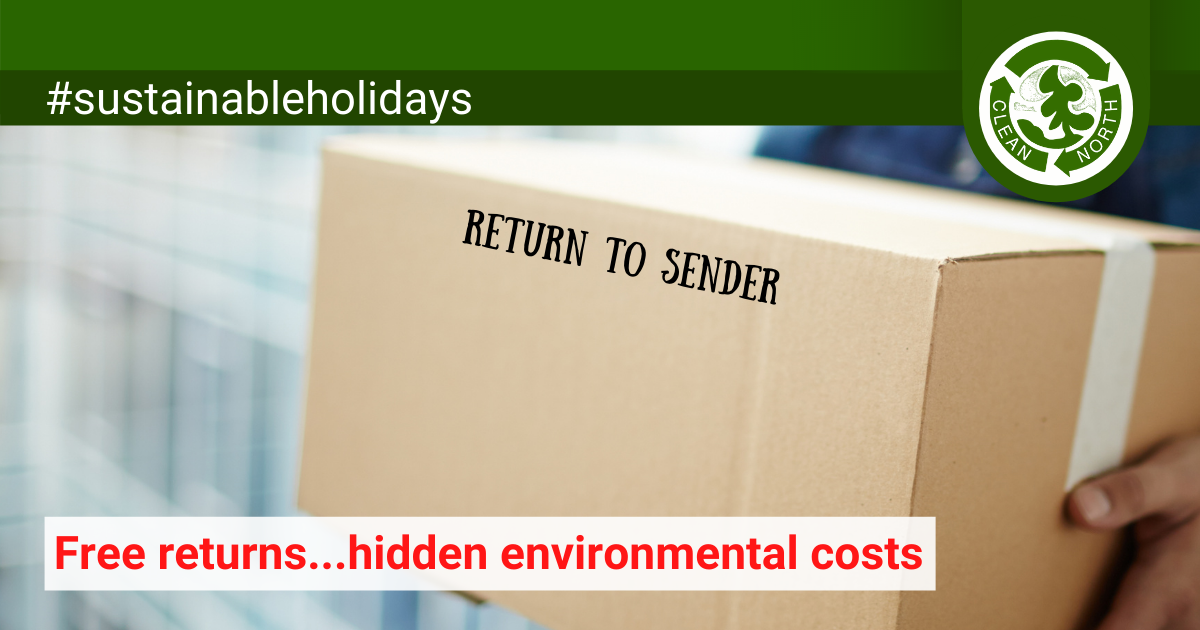
Are you one of the overwhelming majority of people who think online returns go back on the shelf and are resold to the next consumer? Well, think again. The reality is online sellers like Amazon get so many returns that re-selling or recycling them has become a logistical nightmare. In fact, according to a CBC Marketplace investigation, many items returned to Amazon are ending up in landfills. In addition, shipping returns contributes to climate change by increasing greenhouse gas emissions.
For the Marketplace investigation, a dozen items were purchased off Amazon and then sent back with a GPS tracker hidden inside. Only four were resold, with at least one ending up in a landfill.
Online purchases are much more likely to be returned than those bought at a store. One expert quoted in the Marketplace article says that up to 40% of all online purchases go back, while just 10% of items bought in person are returned. Clothing is one of the worst categories. Clothes have a particularly high return rate and are more likely not to be re-sold.
So what can you as a consumer do, especially when shopping in person during a pandemic feels risky or is not feasible?
- Buy less. Two of the most returned categories of items are clothing and shoes. Most of us have way more clothes and shoes than we need.
- Trade clothing with a friend or relative of a similar size.
- Shop online locally. Facebook offers local online shopping via auction and sale groups, and shopping secondhand is much more eco-friendly. Minimal greenhouse gas emissions.
- If you know your size with a given company/brand, try to stick to that company/brand. And make sure you read size charts carefully. Measure yourself before choosing what size to order. Read reviews to see if item runs large or small.
- Choose an online seller that also has a local store so you can return in person (item is more likely to end up back on the shelf plus no long-distance shipping emissions).
- Choose your company wisely. Contact them and ask them what happens to returns and what percent are actually resold. Then google the company to see if they’ve had any bad press about their environmental record.
- If you can absorb the cost, consider donating an online purchase to a charity rather than returning it. Or sell or trade it through a local Facebook group.
- Before you click the final button on an online purchase, get up from your computer or put down your phone and go do something else for a half hour. Then come back and decide if you really need that item or if there’s a different way you could get your hands on what you need.
- Lobby the provincial and federal governments to ban companies from destroying usable consumer goods. We need to change the practice of companies throwing away stuff they deem not worth selling rather than giving them to people in need.




